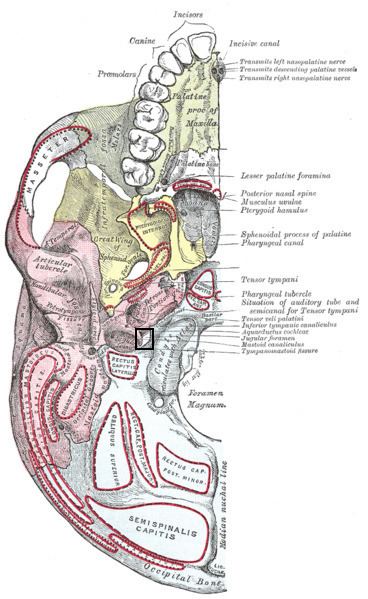Latin Foramen jugulare FMA 56432 | TA A02.1.00.054 | |
 | ||
The jugular foramen is a large foramen (aperture) in the base of the skull. It is located behind the carotid canal and is formed in front by the petrous portion of the temporal bone, and behind by the occipital bone; it is generally larger on the right than on the left side.
Contents
Contents
Cranial nerves IX, X, and XI and the internal jugular vein pass through the jugular foramen.
The jugular foramen may be subdivided into three compartments, each with their own contents.
An alternative imaging based subclassification exists, delineated by the jugular spine which is a bony ridge partially separating the jugular foramen into two parts:
Clinical significance
Obstruction can result in "Vernet's syndrome".
References
Jugular foramen Wikipedia(Text) CC BY-SA
